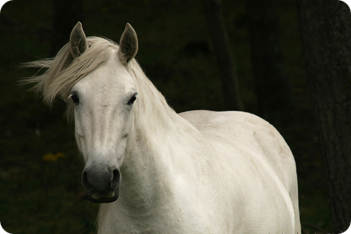
Lipizzaner Horse Breed
From: Horse Breeds

Lipizzaner Horse
This beautiful horse has immense strength, beauty and elegance and its talents are shown very clearly by the Spanish Riding School of Vienna who show off these talented horses movements and airs above the ground to great success.
Originates
The breed originates
in the village of Lipica in Slovenia Austria
Height
Height
is from 15 to 15.3 HH
Colour
Colour
is predominantly grey, many of the foals turn grey with age and only occasionally remain dark in colour.
Conformation
- The head is elegant with a bold, intelligent eye and alert expression and mobile ears.
- The neck is well muscled with a beautiful crest.
- The shoulders are sloping and muscular.
- The back is short and strong.
- The girth is deep.
- The chest is wide.
- The hindquarters are rounded and powerful.
- The limbs are long, elegant and strong.
- The tail is well set on.
- The mane and tail are thick and flowing.
History
In 1580 the two sons of Emperor Ferdinand 1st were given the task of producing the finest horses possible for the Austrian court. Archduke Charles the 2nd set up a stud near to Trieste in a village called Lipizza, and his brother Maximillian 2nd set up a stud at Kladrub in Austria. It was from the stud at Lipizza that the breed Lipizzaner developed and indeed took its name.
The stud at Kladrub produced a heavier breed of horse that was used more for carriage than riding, the two studs would exchange stallions between them and, using Spanish mares and stallions that were then crossed with Karst and Arab mares helped to produce the wonderful Lipizzaner horse that we know today.
It is because of these Spanish stallions and mares that the title Spanish Riding school of Vienna comes from. These lovely horses had to flee from there home in Lipizza for safety reasons and eventually ended up settling at the stud at Piber where they still supply the Spanish riding school with horses of the best quality.
It was in 1735 that Charles 6th first established the Spanish Riding School in the imperial palace in Vienna which is still very much in use today. Alois Podhajsky who was born in 1898 - 1973 is a well known director of the Spanish Riding school and it was thanks to him that the breed and training traditions of the Lipizzaner horses survived World War Two.
During the war Podhajsky moved the horses from Vienna to St Martins in Austria which was away from the threat of bombing and raids, but when St Martins was taken over by the control of the American army and the horses were again under threat, it was only thanks to a friendship between General George S Patton who knew Podhajsky before the war that ensured the safety of these horses, by putting them under American protection. The Lipizzaner horses safely returned to Vienna in 1955.
Spanish Riding School
The Spanish Riding School is known for its training of Classical Dressage which was refined during the Baroque period and this is why these lovely horses are also called Baroque horses. It takes many years of training to produce these horses talents and it is only the stallions who are used for the displays and can show off their own individual talents for the Airs above ground such movements include the Levade , Courbette, Capriole and the Croupade, as well as other Classical movements such as Piaffe, Passage, Pirouette. and Flying changes.
Uses
Lipizzaner's
can be used for dressage, show jumping and driving an excellent all round riding horse who has active and lively paces with great presence.
Lipizzan Association of North America
The association offers information on breeding, buying, news and events with the aim of helping to maintain and preserve this wonderful breed of horse.